Design leadership —
Design alignmnet & collaboration
One of the most significant transitions in my career was the chance to explore the path of product design management after spending six years as an individual contributor at Zendesk.
Making the leap from an individual contributor to a people manager is a big step, and it comes with its own unique challenges. Fortunately, with the right support, resources, and mindset, I was able to successfully navigate this transition. I focused on developing my leadership skills and making a positive impact on my team and the organization as a whole. I’m truly happy and proud of the opportunity to explore this new side of myself.
Here are a few aspects of this transition journey I have experienced in the beggining of product design manager journey.
Zendesk Knowledge management platform (Zendesk Guide) used to create, share, and manage knowledge within an organization to improve customer support and service efficiency.
Effective knowledge management in Zendesk not only improves customer satisfaction by offering quick access to information but also enhances operational efficiency for support teams. By leveraging a centralized knowledge base, organizations can foster a culture of knowledge sharing, leading to better service delivery and a more informed customer base.
Transition from IC to people manager
After I transitioned from being a lead product designer to a role where two of my former peers now report directly to me, I quickly realized that this shift in power dynamics brought some nuances to our working relationship.
Developing Leadership Skills
Having spent the last six years working on Zendesk Guide, I developed a deep understanding of the product, the people involved, and the overall business. This experience proved to be incredibly valuable when I transitioned from managing individual projects to focusing more on team dynamics and collaboration and design leadership. The context I gained over the years has allowed me to dedicate my time to learning how to effectively work with teams and grow as a people manager. My focus has shifted towards leading a team, which involves mentoring, coaching, and supporting team members in their work.
Effective communication becomes crucial. One of my focus areas has been and still is sharpening my communication skills in providing constructive feedback, facilitating discussions, and ensuring that team members feel heard and valued.
Business priorities
In many situations as a lead product designer, I did not have too many opportunities to influence business strategy. One of the first things I had to learn was to think more strategically about the team's goals and how their work aligns with the organization's objectives, rather than just focusing on the tactical aspects of design work.
Team culture
Creating an inclusive and collaborative team environment is essential. I have spent time thinking through and finding ways to encourage teamwork and ensure that everyone feels part of the process. It might sound simple but design team dinners, a relaxed atmosphere, a safe space, and creating trust are key ingredients in building good team dynamics.
Balancing design and management roles
As an individual contributor, it was natural for me to operate as a hands-on designer. One of the challenges that I had to overcome was finding a balance between still being hands-on versus giving room and space for my team to step up and drive forward initiatives.
The power of retrospectives
Retrospectives are a powerful tool used in agile methodologies to facilitate reflection, learning, and continuous improvement within teams. They provide a structured environment for team members to collectively analyze their recent work, identify successes and challenges, and discuss ways to enhance collaboration and performance. By fostering open communication and trust, retrospectives empower teams to address misalignments and improve processes, ultimately steering them towards a shared vision and goals.
One of the first things I decided to do as a new product design manager was to run a retrospective on all the rituals and processes we had in place for our design team. This helped me pinpoint some quick wins that I could implement right away, while also identifying bigger changes that would require more of my attention down the line.
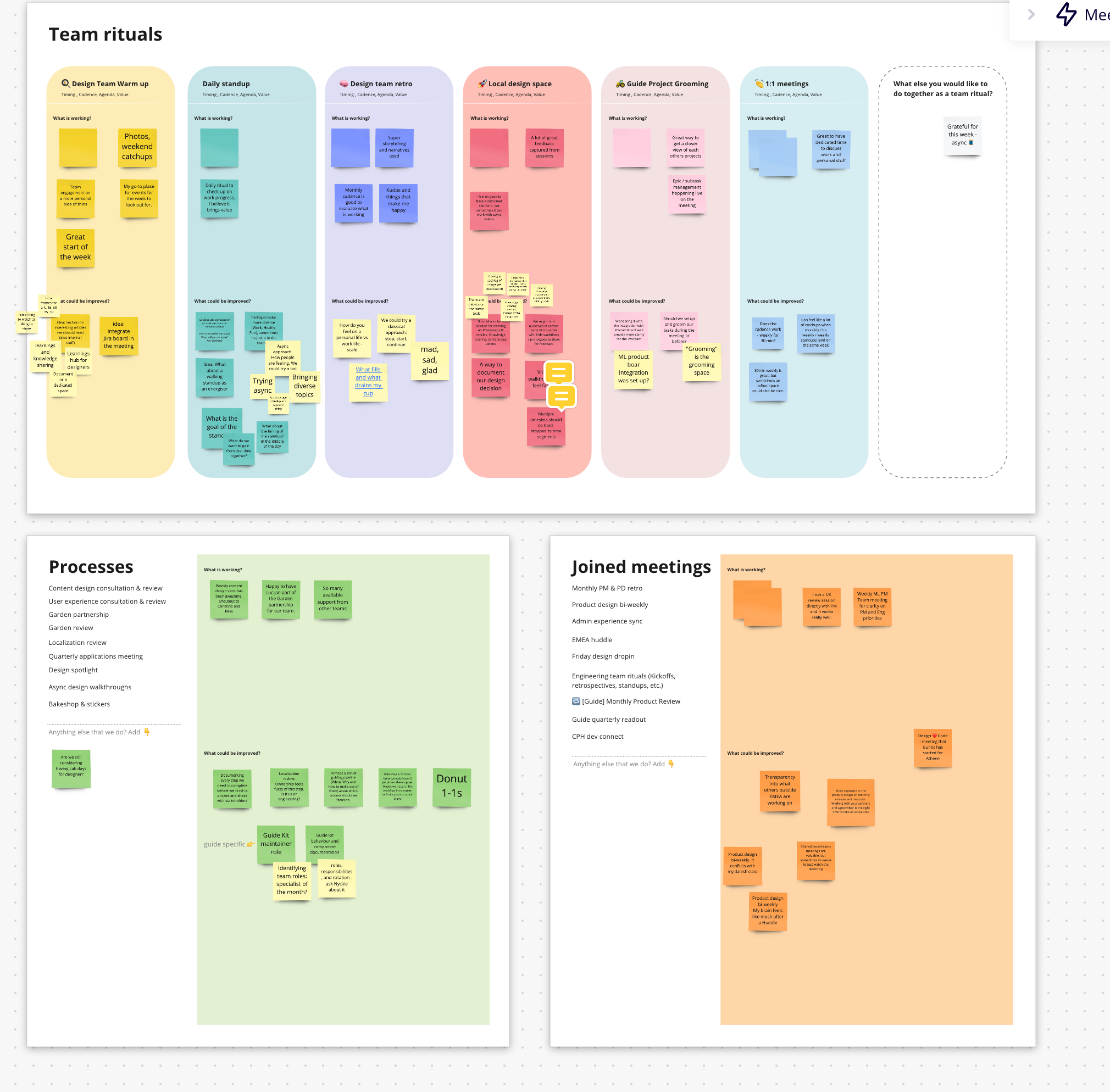
Design team culture
Maintaining and nurturing a strong product design team culture is incredibly important, and it requires genuine care and effort. Just like the designs we create, team culture thrives on attention to detail and aesthetics. When we invest time in fostering an environment where creativity can flourish, we empower our designers to bring their best ideas to the table. This means celebrating successes, encouraging open communication, and creating spaces that inspire collaboration. A positive culture not only enhances team morale but also leads to better design outcomes, as team members feel valued and motivated to contribute. Ultimately, a well-cultivated culture reflects in the quality of our work, making it essential to nurture it with intention and passion.
To support these principles I have spent time at the end of 2022 designing, preparing, and facilitating the end-of-the-year extended design team retrospective. I have decided to lean into a Middle Earth map from Lord of the Rings.
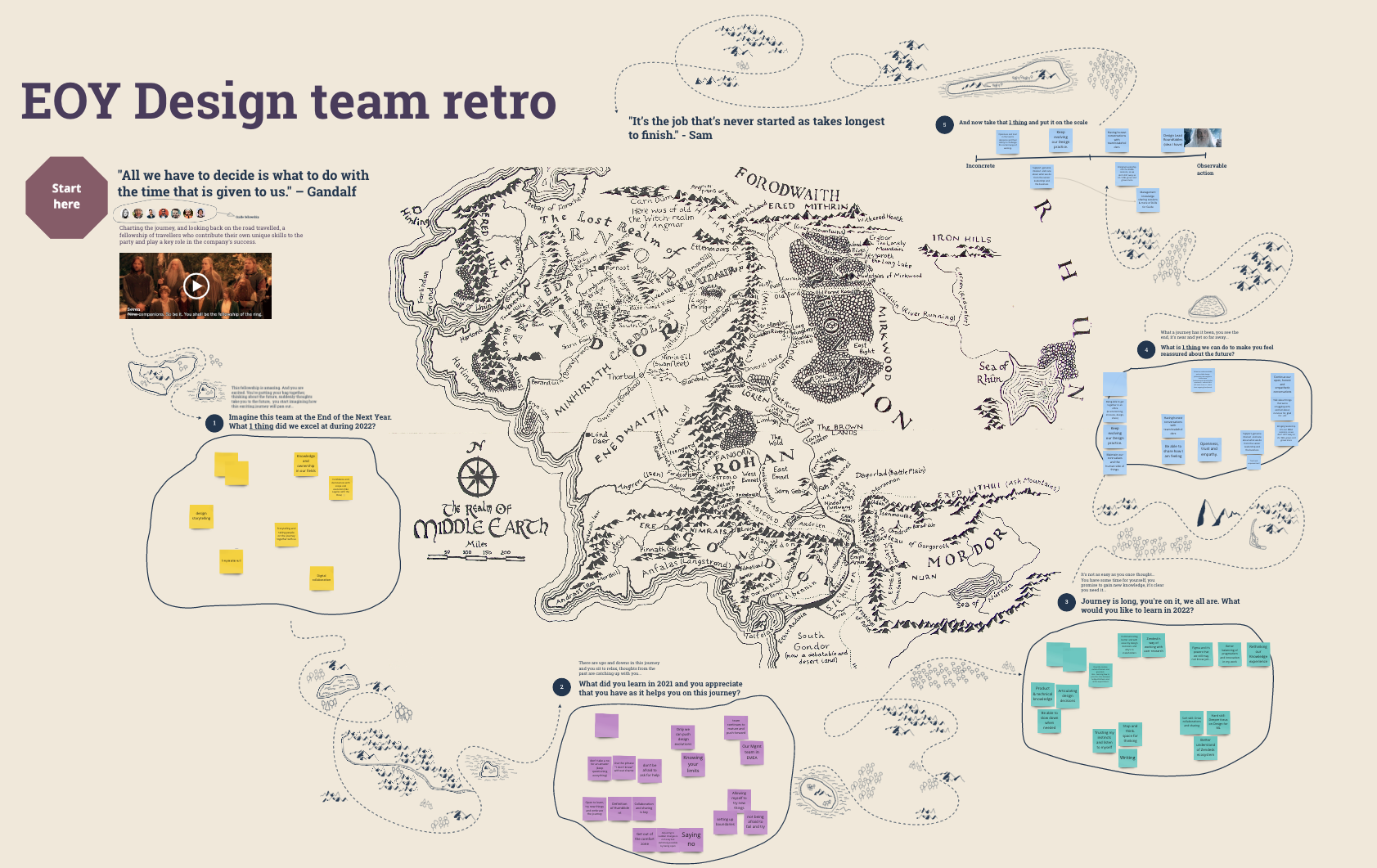
Cross-functional alignment
Cross-functional alignment is critical in product design and development, especially after challenging projects. It involves ensuring that different teams—such as design, engineering, and product management—are working together effectively towards common goals. One of these projects was creating a search crawler for Zendesk Guide.
The search crawler lets you implement federated search in your help center without developer resources. You can set up multiple crawlers in your help center to crawl and index different content in the same or different websites.
Users can set up one or more search crawlers to crawl and index external content that you want to make available to users performing a search in your help center. External sites that you want to crawl must have a sitemap that lists the pages for the search crawler.
This project was quite technical and had its challenges in getting to a most intuitive and simple solution to accommodate all technical requirements and constraints.
After an 8-month-long process, we have decided to run a cross-functional retrospective between product managers, the team of 6 engineers, and the product designers involved in the project. I took the role of preparing and facilitating the retrospective.
Our goal: learn from the process and outline improvements for engineering, product management and product design.
Our focus: collaboration between engineering, product design and product management touch points.
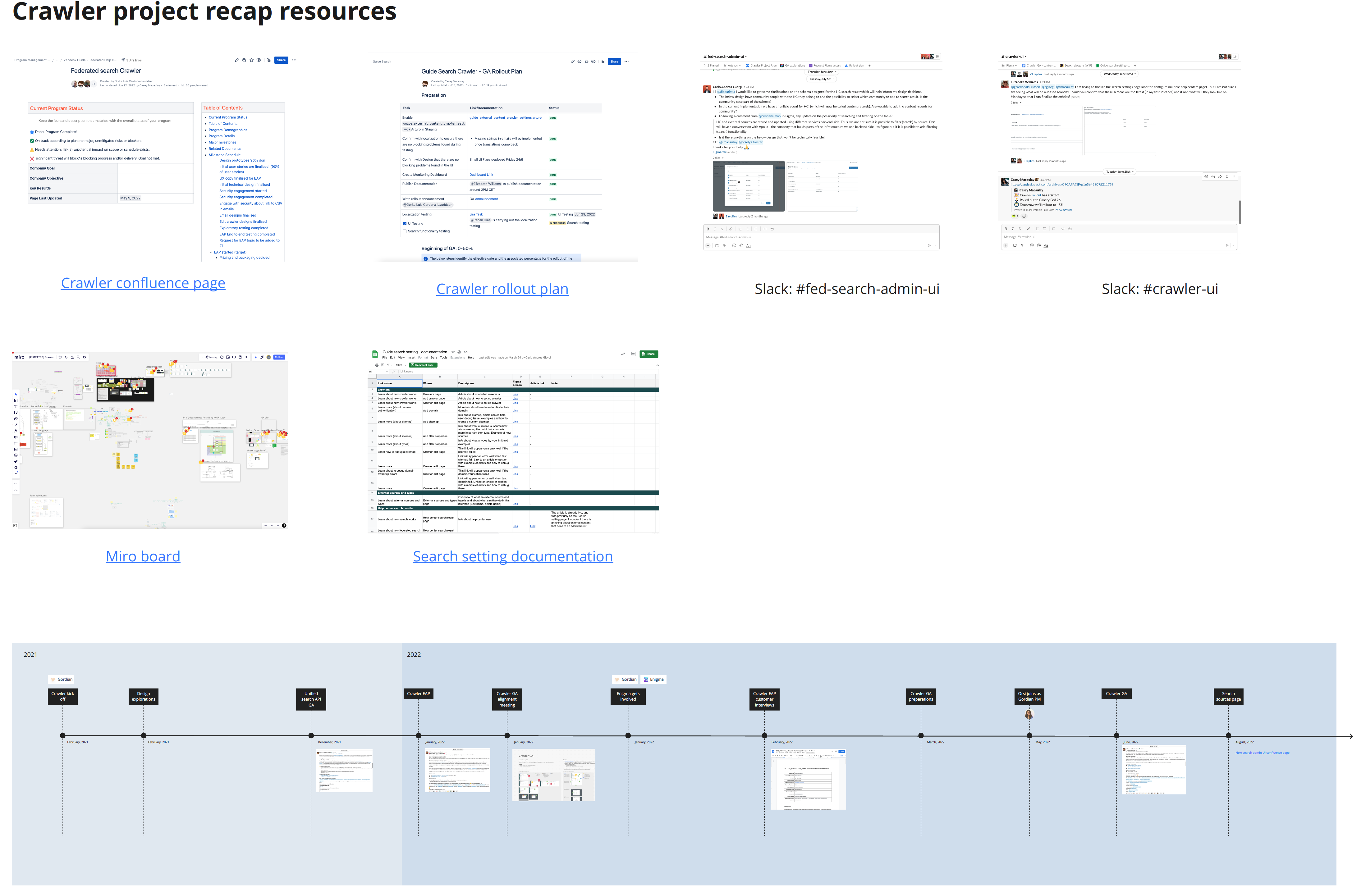
I have invested the time, design skills, and effort in preparing the custom design map to indicate the journey. I wanted to encapsulate all the different aspects of an adventure that a traveler could experience and used it as a method to indicate different segments of the reflection such as:
- Dense Forest: Consider a moment where you thought there was no way out: all the risks /obstacles/worries/frustrations that got in the way.
- Bridge crossing: Consider moments where we, as a team, were able to find a compromise and move the project along.
- Mellow Grove: Consider a moment that worked well. Easy and smooth collaboration/execution.
- Camp Site: Leave an appreciation message to the people who worked on this project alongside you. Examples: Thank you [name] for... / [Name] I appreciated your ...
- Mountains: What were some of the biggest and most complicated moments with this project that seemed impossible to resolve?
- Flock of mosquitos: Small annoyances that get in your way while collaborating with other engineers, product designers, or product managers.
- Unexpected swamp: What were some of the moments/discoveries that were very unexpected? These moments caused delays / needed additional investigations /took us back to the drawing board.
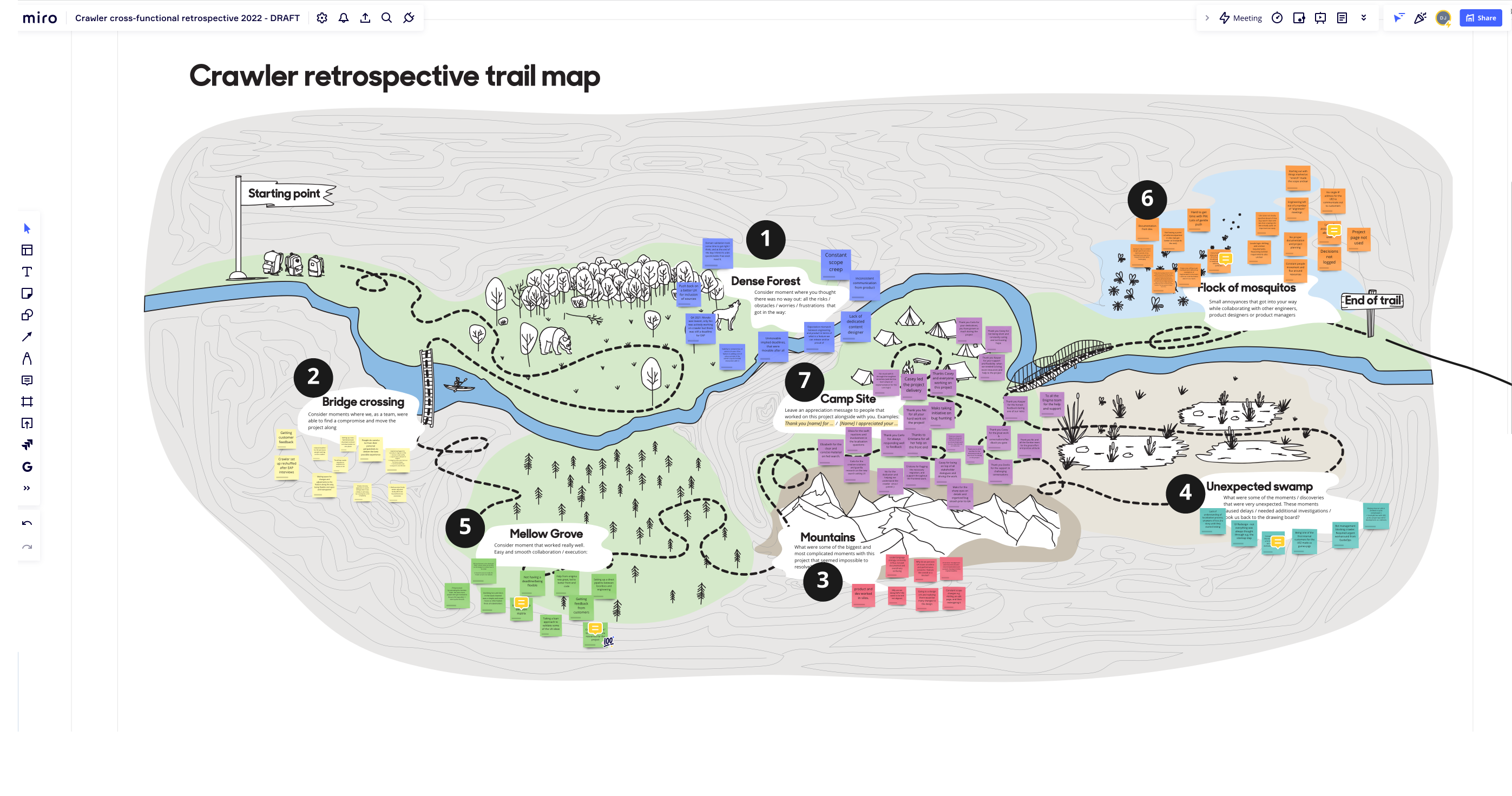
Knowledge sharing and education
As a product design leader and team manager, one of my key responsibilities is to identify and eliminate blockers that hinder my team's progress. When Zendesk design organization adopted Figma in early 2022, we discovered that some team members were struggling with gaps in their knowledge while using Figma, a crucial tool in our design process. This was impacting our efficiency and creating some miscommunication and misalignments, so it became a priority for me to address this issue head-on.
I have worked together with my team to put together training videos and we run a workshop for our cross-functional partners to provide targeted training sessions and resources. This effort has helped my team to feel more confident and has helped to eliminate the knowledge gaps in order to foster a culture of continuous learning and collaboration.
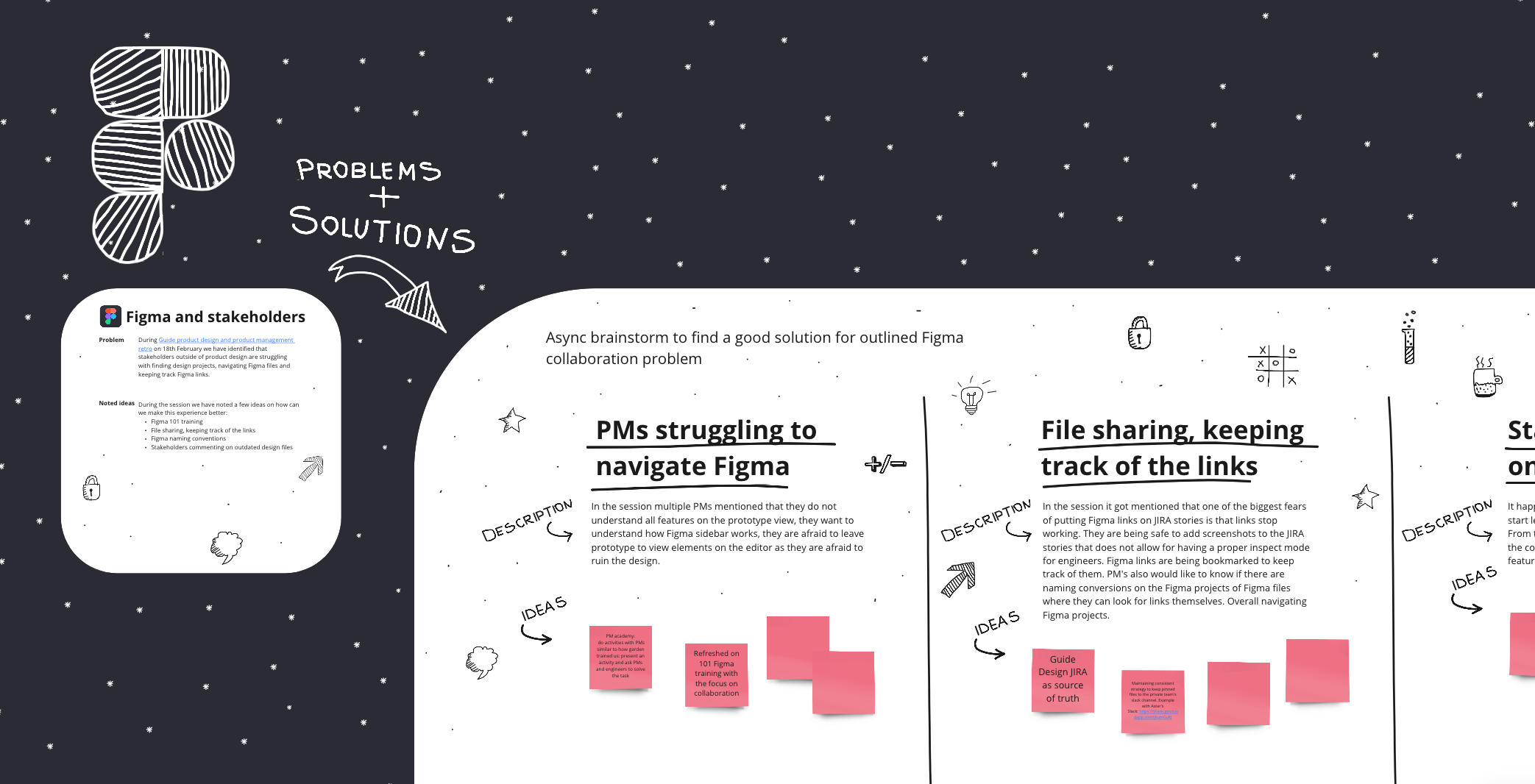
The transition to management required new skills and knowledge. Embracing a mindset of continuous learning and seeking mentorship outside of Zendesk and within Zendesk has helped me to grow into my new role.